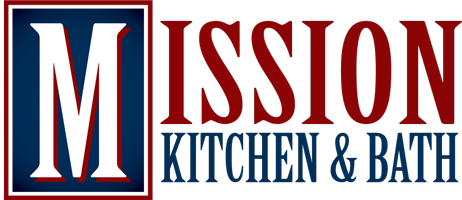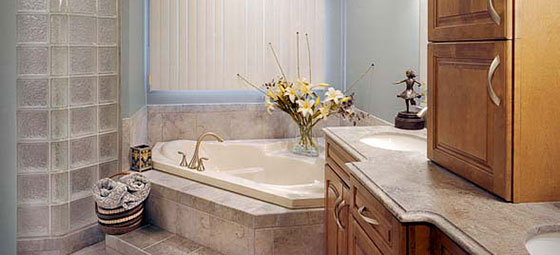The bathroom is usually the smallest room in the house, making it a design challenge. Space and budget are your primary limitations, although the location of plumbing lines and electrical wiring can also restrict your options. But with careful and detailed planning, you can create a successful and functional bathroom remodel design.
Evaluate your current bathroom design
The first thing to do is look at what you like and don’t like about your current bathroom design. Define how you use your bathroom and determine what changes you would like to make or features or upgrades you would like to add. Specify what the remodeling project needs to accomplish to be successful.
Evaluate the current layout
Take careful measurements and create a detailed sketch of the layout of your existing bathroom floor plan, making sure to keep it to scale. Indicate details including wall detail; window and door locations and widths; width and length of cabinets and tub; the distance from the nearest wall to the center of the toilet and the centers of all sink drains; and the location of all electrical outlets, switches, and fixtures.
Decide what features you want
Think about what you want your finished project to accomplish. Can you achieve your goals by simply updating fixtures and components or is a complete overhaul needed? Determine what style you want. Visit showrooms to get ideas. Functionality, accessibility, convenience, and storage should all be considerations when deciding what features to incorporate.
Determine your budget
Create a realistic budget for your bathroom remodel. Determine if this is something you can do yourself or if you need to hire a professional and include that cost into your budget. Make sure you account for the unexpected when establishing your budget. Unforeseen problems, such as unseen water damage from leaks or other unexpected repairs, are especially common in bathrooms. You should pad your budget by 10 to 20 percent.
Hire contractor
If you plan to hire a professional, now is the time to bring them into the planning. A skilled professional can be an invaluable asset.
Select fixtures and components
There is a nearly endless selection of fixtures and components to suit any bathroom style and design. Find fixtures and components that offer the features you want, including a sink and vanity, tub, and toilet. Consider selecting water-saving fixtures. If you plan to stay in your home long-term, consider selecting fixtures with universal design that can maintain accessibility as you age.
In addition to the fixtures, you’ll also need to select components and other details, including lighting, faucets, flooring, tile, wall coverings, and accessories. Wall and floor coverings need to be able to resist moisture. Consider implementing a layered lighting approach, combining task, ambient, accent, and decorative lighting.
Create a final design
Measure the fixtures and components you’ve selected and sketch out a new bathroom design using those measurements. Again, sketch it to scale and include details. It can help to cut out cardboard templates of the components to the same scale was your room dimension sketch so you can move them around easily to see what works best.
Determine what type of layout you want to use. There are four basic bathroom layouts:
- One-wall layout – In this design the tub, sink, and toilet are all located along the same wall. This is the most economical layout, but it is also usually the least interesting.
- L-shaped layout – In this layout the vanity/sink and toilet are positioned along one side wall and tub is located along the back wall. This layout is also economical since the plumbing lines can all be on one wall.
- Corridor layout – This layout places the bathtub along one wall while the vanity/sink and toilet are placed on the opposite wall.
- U-shaped layout – With this layout the fixtures are dispersed along three walls. This creates the best sense of spaciousness but it requires a large, square space.
Keep in mind how you use your bathroom when you select a layout. Also keep in mind that moving plumbing lines can give you more options but will significantly increase the cost of the project. If you can use a layout that keeps all of the rough plumbing on one wet wall, it will make it easier to make repairs and it will require fewer materials. Likewise, moving electrical and heating ducts can be done, but at an expense. Radical changes to the current layout may also require structural changes.
When you begin laying out your fixtures, start with the bathtub. Keep accessibility in mind, giving plenty of space to enter and exit. Along the back wall, away from the door, is the most common location for the tub. Next, place the sink and vanity. If it is near the door, be sure the door opens away from it. Finally, position the toilet, preferably away from the door. If you have the space, incorporate storage, like shelves, drawers, or bins. Your local building department can provide you with codes regarding required spacing of the fixtures.
Prepare for construction
Once your final remodel design is established, you’re ready to begin preparing for construction. If needed, obtain a building permit. If you’ve hired a contractor, they may be able to take care of this for you. Next, compile a list of materials. Create a project plan, listing each phase of the project and the materials required for each phase. Check with suppliers to see if any materials need to be ordered in advance. As you begin construction, schedule a building inspector at the appropriate times for required inspections.

